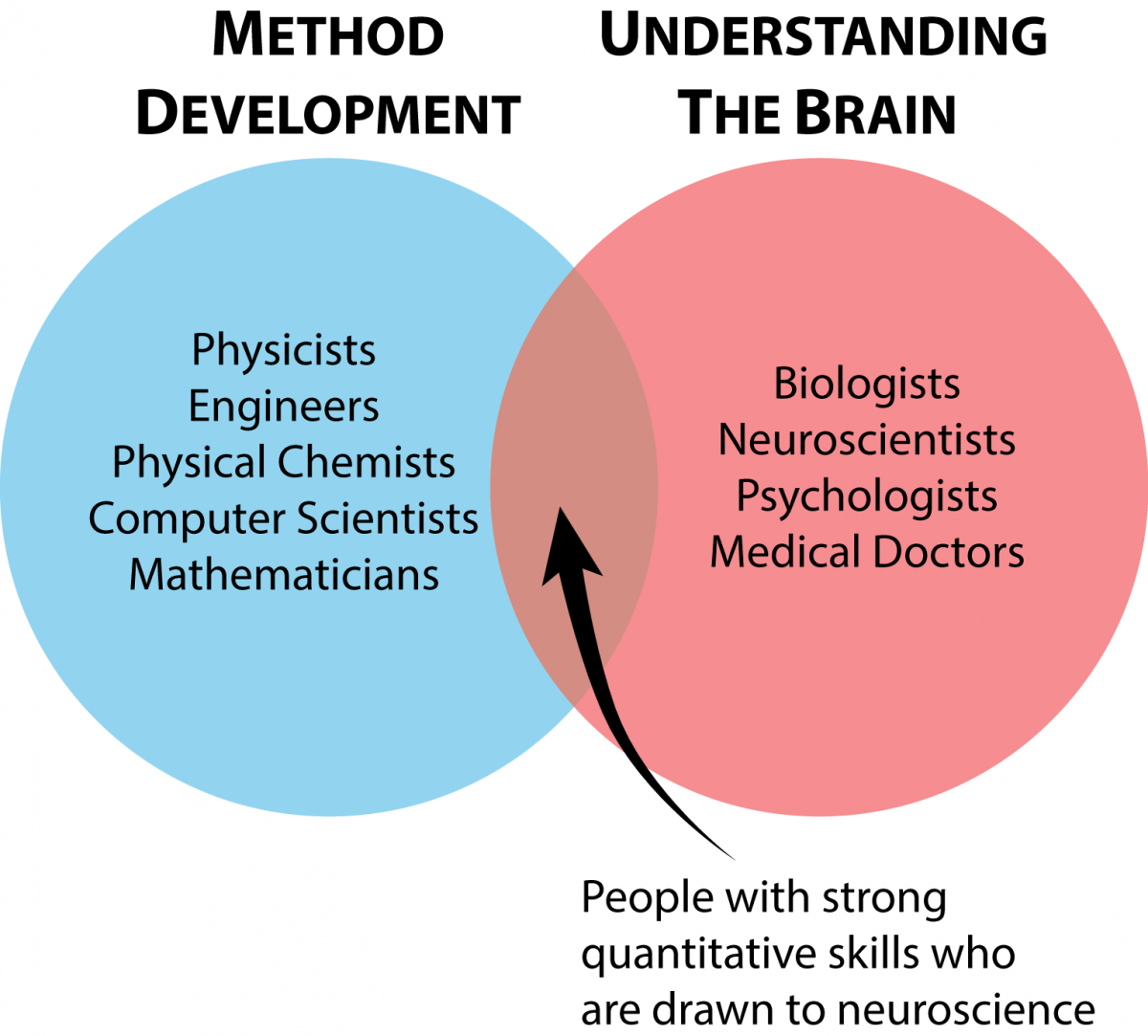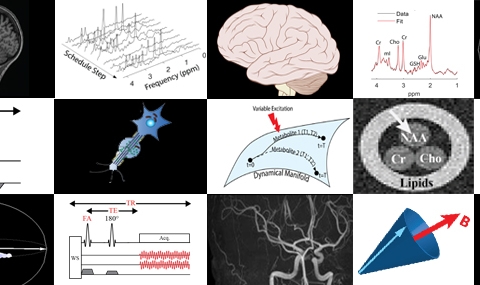We are always on the lookout for capable and motivated people for graduate and post-graduate positions. The work fits into one of two main categories: developing biomedical imaging methods on the one hand, and applying them to understand the brain on the other hand. The people we look for fall into one of these two categories (or both!).

Biomedical Imaging & Method Development
People interested in developing new techniques for imaging the brain should ideally come from a quantitative background: physics (or physical chemistry), engineering, computer science, mathematics. Work includes:
- Modifying the electromagnetic fields inside the MRI scanner to coherently control the nuclear spins.
- Writing computer simulations to predict the response of spins to applied radiofrequency fields.
- Developing faster, better ways of acquiring spectroscopic and spectroscopic imaging data.
- Developing new methods for detecting weak signals from important molecules in the brain.
- Coding. We work a lot in MATLAB and C++ to test, simulate and analyze our data. You should expect to spend a lot of your time (»60-70%) doing precisely that.
- Developing and Implementing state-of-the-art signal processing, machine learning
- Scanning people. All of our methods are ultimately used on actual, live people, at the 3 Tesla and 7 Tesla MRI scanners at Weizmann. Expect to test your wild ideas on volunteers (don’t worry, it’s painless, harmless and they get paid).
Understanding Brain Neurochemistry: From Function to Plasticity
One of our main goals is to use the spectroscopic tools we develop to understand how brain physiology changes in response to external stimuli, or following learning. People interested in these aspects often come from a Life Sciences background, including psychology and neuroscience. Work might include:
- Coming up with an interesting behavioral system or question to study.
- Scanning volunteers and patients at the Institute’s state-of-the-art MRI machines (including the only 7 Tesla MRI in Israel).
- Analyzing neuroimaging and spectroscopic data from healthy volunteers and patients, using a variety of software packages and in-house MATLAB tools (you don’t need to create them, but you do need to learn how to use them).
- In some projects, working with patient populations, ranging from major depression to multiple sclerosis and cancer.
- Testing the unique biomedical techniques we develop in the lab, and showing they indeed improve the assessment of disease state and prognosis in patient populations.



